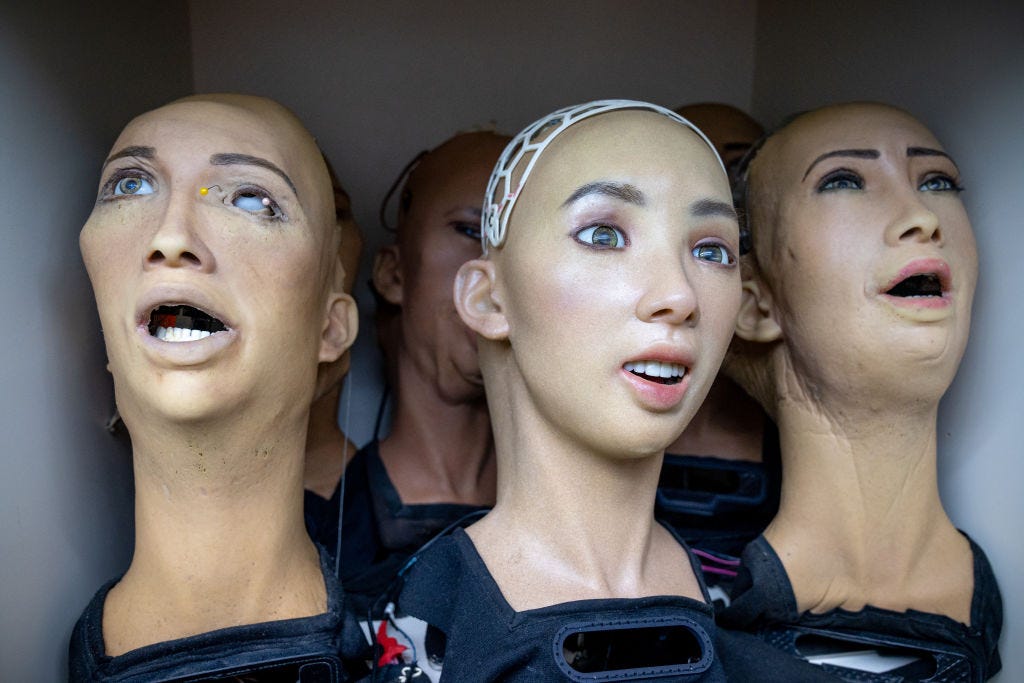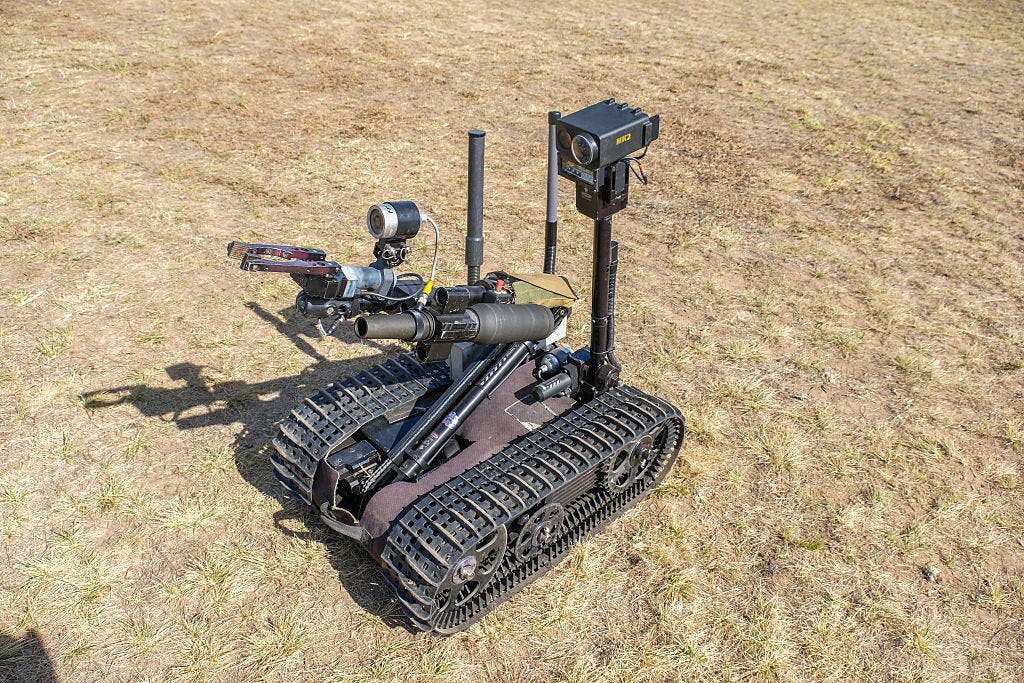Of Love, Bombs, and Sexbots
synthetic intimacy #3, an interview with Dr. Julie Carpenter
Dr. Julie Carpenter is a human-robot-interaction researcher and ethnographer whose work traces how our identities and relationships are reshaped by intelligent machines. An External Fellow with Cal Poly’s Ethics + Emerging Sciences Group, she has spent more than two decades running field studies at the intersection of culture, psychology, and technology, from UX research for major social-media platforms to on-the-ground interviews with explosive-ordnance-disposal teams who treat their bomb-disposal robots as extensions of themselves.
Carpenter’s landmark book Culture and Human-Robot Interaction in Militarized Spaces: A War Story (Routledge, 2016) broke new ground by showing how people can develop real attachment—even grief—toward machines built for combat. Her new volume, The Naked Android: Synthetic Socialness and the Human Gaze (Routledge, 2024), widens the lens to sex robots, chatbots, and other AI companions, asking what happens when intimacy itself is mediated by code.
In the conversation that follows, we dig into the emerging grammar of “synthetic intimacy”: why current sex-robot markets remain overwhelmingly heteronormative, how women’s attachments to chatbots diverge from men’s ties to physical devices, and what designers, users, and policymakers still get wrong about consent, data, and emotional safety in AI companionship.
Katherine: When and how did you start researching people who form attachments with AI companions, or artificial intimacy?
Dr. Julie Carpenter: The intimacy piece is an offshoot of my larger interest in people and their attachment to AI.
That's always a messy question for me: where my interest started. It probably began with science fiction, like a lot of people, because we’ve heard stories about people attached to AI in films such as Her or Blade Runner, and many other tales of people falling in love with robots.
That storytelling always interested me, and as an adult I was in industry and studying human-computer interaction just as advances in robotics were coming to fruition over the last couple of decades.
For example, I often tell the story that my “origin” was sparked by seeing David Hanson’s early robot on what I think was CNN. David Hanson, of Hanson Robotics—the creator of the Sophia robot—is known for very lifelike, human-like robots. That’s his specialty.
He came from a Disney animatronics background and was exceptionally skilled at making lifelike skin for robots. Combined with rapid technological progress, robots suddenly began doing things we had never seen before. Now we take it for granted—videos show robots standing, walking on ice, climbing hills, moving semi-autonomously—but twenty years ago that wasn’t possible; it was just becoming feasible.
Because of my HCI background, I saw robots as a medium onto which we project expectations shaped by cultural stories and science fiction. I knew interactions with lifelike robots would be fascinating: they looked human, yet the AI wasn’t there. That mismatch—appearance versus capability—creates huge gaps in user expectations. Most laypeople don’t understand the limited capabilities of robots, yet they still project narratives and expectations onto them.
I thought this was an interesting area to explore. I didn’t start out focused on attachment, but I encountered it in my research—especially in my dissertation on soldiers who worked with non-human-like robots daily. That’s a long story. Sorry about that.
Katherine: No, it’s okay. It’s interesting. I feel like people’s attachment to non-human entities—anything from their car to a computer, a chatbot, or something imagined like a fictional character—falls into three categories. I’d love to hear if that matches your experience.
It’s either parasocial—similar to how someone might really like a celebrity; it’s love, the way I might love my husband; or it’s artistic, devotional, even religious.
Have you noticed a similar pattern, or does one category appear more in your work?
Dr. Julie Carpenter: I acknowledge that those are some categories, but there are certainly others. For example, some people with objectophilia love the technology for its own sake—someone who loves a robot for its “robotness,” its very nature. People project onto robots in many ways.
Regarding patterns in such paraphilias, yes—I saw distinct patterns in each context I studied. For example…When I studied explosive ordinance disposal soldiers—bomb-disposal personnel—the group was male-dominated. They were highly trained and knew exactly what their robots could and couldn’t do. The robots weren’t human-like at all: two tank-like models, one about armchair-sized and one backpack-sized.
You’ve seen similar robots used by police for remote bomb disposal. Even with these machines, social interaction patterns emerged. The categories differed from yours. At that time, EOD teams were small; one person operated the semi-autonomous robot with a game-style controller. Team members could identify the operator by that person’s distinctive strategies. Operators described the robot as an extension of themselves—an avatar reaching into a different environment: “the robot is my eyes at a distance; the robot is my arms at a distance.” The robot became their avatar. Teams even named robots after the operator—if the operator was Lieutenant Smith, the robot might be “Little Smith.”
That “extension-of-self” category differs from the ones you named, yet it was a distinct pattern in this group. I hope that helps.






